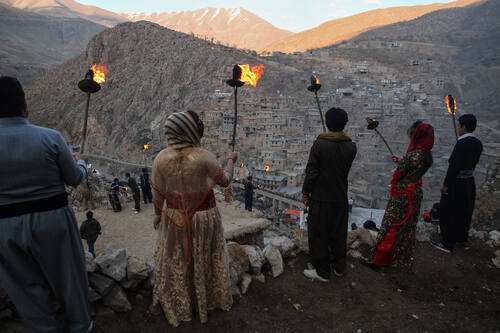Iranian, German archaeologists commence work in western Iran

TEHRAN – A team of Iranian and German archaeologists has commenced another excavation season on an ancient mount in western Iran, a local official said on Sunday.
Experts of other fields such as natural sciences, architecture, restoration, and surveying are taking part in the project comprises, which is aimed to define boundaries of the mount, Pouya Talebnia said.
Co-directed by Talebnia and Shelir Amelirad from Heidelberg University, the team is willing to shed new light on the history of the nearby Uramanat tries to unearth remnants of historical monuments and relics.
Stretched on the slopes of Sarvabad county, and shared between the provinces of Kordestan and Kermanshah, the rural area embraces dense and step-like rows of houses in a way that the roof of each house forms the yard of the upper one, a feature that adds to its charm and attractiveness.
The remote and mountainous landscape of Uramanat, which is a UNESCO World Heritage, bears testimony to the traditional culture of the Hawrami people, an agropastoral Kurdish tribe that has inhabited the region since about 3000 BC.
The mode of human habitation in its main valleys has been adapted over millennia to the rough mountainous environment. Tiered steep-slope planning and architecture, gardening on dry-stone terraces, livestock breeding, and seasonal vertical migration are among the distinctive features of the local culture and life of the semi-nomadic Hawrami people who dwell in lowlands and highlands during different seasons of each year. Their uninterrupted presence in the landscape, which is also characterized by exceptional biodiversity and endemism, as evidenced by stone tools, caves and rock shelters, mounds, remnants of permanent and temporary settlement sites, and workshops, cemeteries, roads, villages, castles, and more.
AFM
Leave a Comment